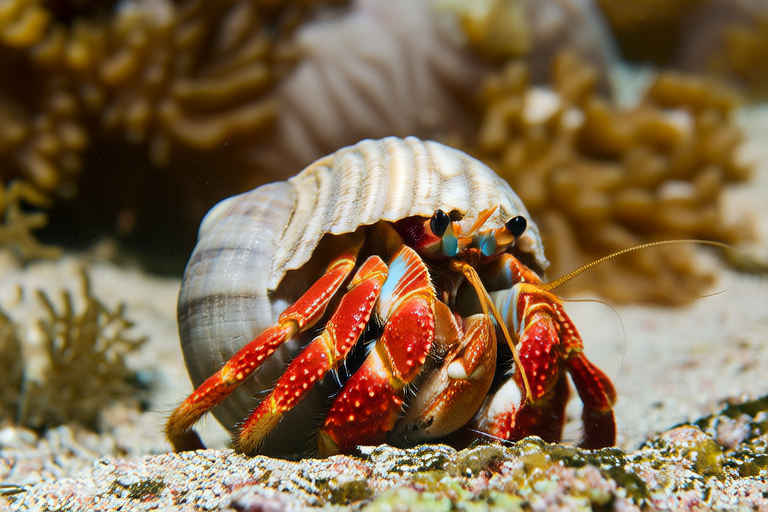
Hermit Crabs: Insights from Experts
Hermit crabs are fascinating creatures with unique behaviors, habitats, and care requirements. Understanding these aspects is crucial for providing proper care to hermit crabs as pets. This article delves into the shell-swapping habits, social interactions, and environmental needs of hermit crabs, offering expert insights and practical advice.
Shell-Swapping Habits
One of the most distinctive features of hermit crabs is their shell-swapping habit. These crustaceans have soft, vulnerable abdomens that they protect by living inside discarded mollusk shells. As hermit crabs grow, they outgrow their shells and must find larger ones to accommodate their expanding bodies. This process involves leaving their current home and searching for a more suitable one. Hermit crabs are opportunistic and will sometimes fight or even steal shells from other crabs if necessary.
Social Interactions Within Colonies
Hermit crabs are social animals that live in colonies. They communicate through chemical signals and touch, forming complex relationships within their groups. Research has shown that hermit crabs can recognize and remember individual members of their colony, which may influence their social behavior. Despite being primarily nocturnal, hermit crabs engage in various activities during the day, including foraging for food and exploring their environment. Providing ample space and resources for multiple hermit crabs encourages positive social interactions and reduces stress.
Environmental Needs
Creating an enriching environment for hermit crabs requires replicating their natural habitat. Hermit crabs thrive in tropical coastal regions with warm temperatures, high humidity, and access to salt water. Maintaining optimal conditions for pet hermit crabs involves using a heat lamp, misting system, and salt water dish. The substrate should be deep enough for burrowing and provide a natural texture, such as sand or coconut fiber. Regularly changing the substrate helps prevent bacterial growth and keeps the enclosure clean.
Myths Debunked by Marine Biologists
Several myths about hermit crabs persist among pet owners, but marine biologists have debunked many of them. One common misconception is that hermit crabs only need fresh water. In reality, hermit crabs require both fresh and salt water to maintain proper hydration and osmotic balance. Another myth is that hermit crabs do not need companionship. While hermit crabs can survive alone, they benefit from social interaction and enrichment provided by living with others.
Tips for Maintaining Health
Maintaining the health of hermit crabs involves regular cleaning of the enclosure and monitoring for signs of illness. Common health issues include molting problems, shell rot, and parasitic infections. To prevent these issues, it’s essential to provide a balanced diet rich in calcium, protein, and vitamins. Offering a variety of foods, such as fruits, vegetables, and commercially available hermit crab food, ensures that your pet receives all necessary nutrients.
Understanding Natural Habitat for Better Care
Understanding the natural habitat of hermit crabs is crucial for providing proper care in domestic settings. Hermit crabs are adapted to life in tropical coastal regions with warm temperatures, high humidity, and access to salt water. Replicating these conditions in captivity promotes healthy growth and development. Providing a varied diet, suitable substrate, and ample space for exploration and socialization further enhances the well-being of pet hermit crabs.
Conclusion
In conclusion, hermit crabs are captivating creatures with unique behaviors, habitats, and care requirements. By understanding their shell-swapping habits, social interactions, and environmental needs, we can create enriching environments for hermit crabs as pets. Debunking common myths and following expert advice on maintaining health ensures that hermit crabs thrive in domestic settings. Understanding the natural habitat of hermit crabs is essential for providing proper care and promoting their well-being.




